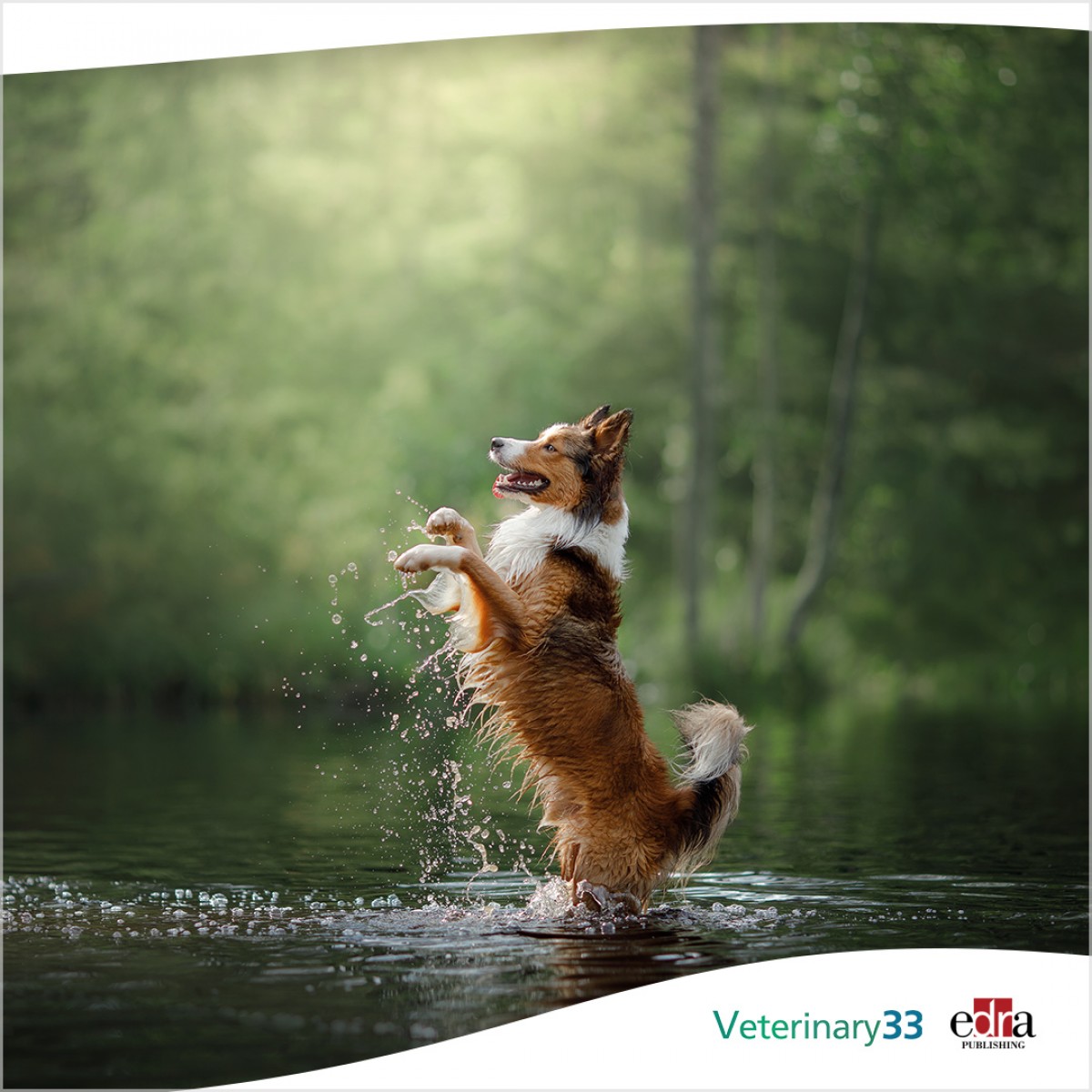Keeping pets safe during the dog days of summer
By Beth Saulnier, Cornellians blog
With summer about to kick into high gear, Cornellians asked Michelle Moyal, DVM ’07, for some tips on keeping our furry friends safe and healthy.
In addition to being an alum of CVM, Moyal joined its faculty in 2020 as an assistant clinical professor in primary care surgery.
She’s also the proud mom of five rescue pets: two dogs (Carl, a soft-coated wheaten terrier, and Chester, a mixed-breed pooch) as well as three cats ranging in age from around 18 months to 18 years.
How much should we be concerned about the impact of summer on pets?
Hot weather can be more detrimental than we think—and it can happen faster than we expect.
Dogs don’t have a lot of areas on their body where they can release heat. Some is released through their paw pads; panting helps a bit with cooling, but not much.
It may take time for humans to feel the effects of hot temperatures, but it’s much faster in animals. You have to pay close attention to the signs your pet gives you.
One perennial concern is leaving a dog in a car in the summer. Why is that so dangerous?
Even an open window doesn’t guarantee air circulation, and temperatures can escalate very quickly; a study out of Stanford showed that within an hour, it can go up 40 degrees.
So if you leave your pet in a 70-degree car and are gone for an hour, we’re talking about temperatures of around 110.
And even in shorter amounts of time, it’s still very hot.
What about hot pavement?
It can cause significant burns on dogs’ paw pads. It’s painful, requires medical care, and takes a fair amount of time to heal.
I have a rule of thumb that if you can’t hold the back of your hand against the pavement longer than eight seconds or so, your dog should not be walking on it without protection.
In terms of summertime exercise, do dogs need to ease into activity like people do?
I worked emergency in California, and I used to see this often: you’d have the first beautiful day of the season, and an owner takes their pet who has been a couch potato over the winter out for a five-mile hike.
A dog will follow you anywhere; even if they don’t have the energy or endurance, many will still go those five miles.
If you’re encouraging them and they’re excited, they may not realize what they’re doing to their body.
If you’re out on a warm day, should your dog have its own water bottle?
Absolutely, and don’t wait until they look thirsty or start to pant heavily.
Offer frequent breaks—even if your dog still wants to go—including water and shade.
You don’t have to get fancy; you can just use a bowl. But there are products that make it easy, like bottles you can squeeze to fill a little bowl on the top.
Is there a temperature at which you should keep your dog inside except for necessary bathroom trips?
There are different opinions, but to me any length of time at 75 degrees and above can be problematic.
And it’s even more of an issue in elderly dogs, dogs who are overweight, and the very popular “smushed-face” breeds like pugs, English bulldogs, French bulldogs, and Boston terriers.
If your dog seems overheated but it doesn’t appear to be an emergency, what should you do?
Sometimes it is hard to discern — so if there’s any confusion, I urge everyone to at least call their vet, in case an animal is on their way to having a more serious condition.
Get them out of the heat to a cool, shaded area, or in the house if there’s AC. They can lay on a cool floor; you don’t need to put ice packs on them, but you might offer small amounts of water with ice cubes in it.
Read the original article: https://alumni.cornell.edu/cornellians/summer-pet-safety/














List
Add
Please enter a comment